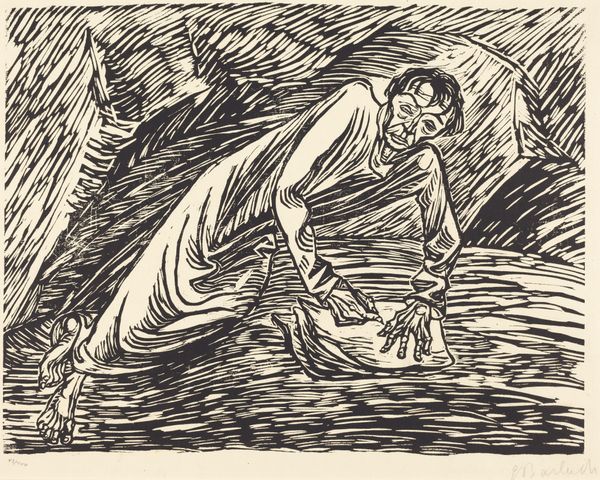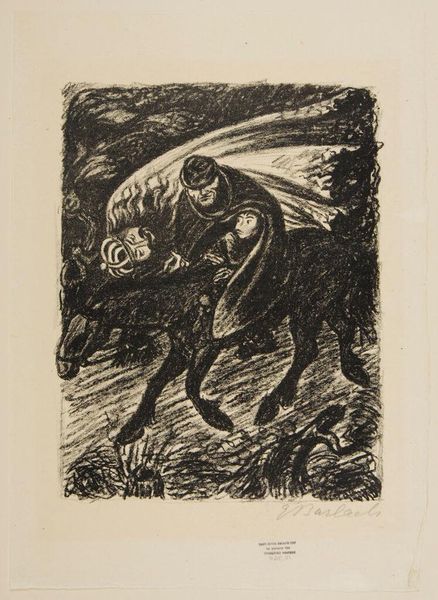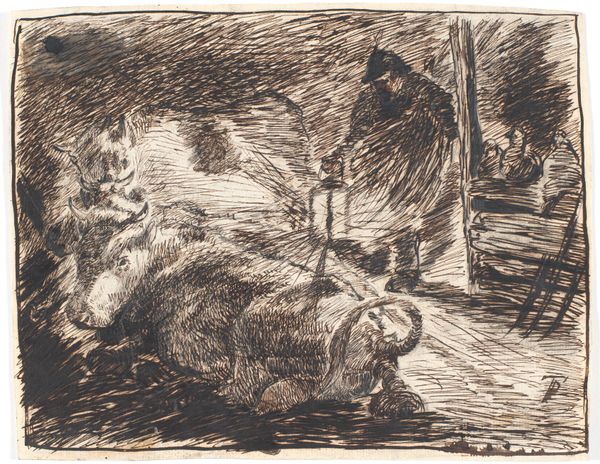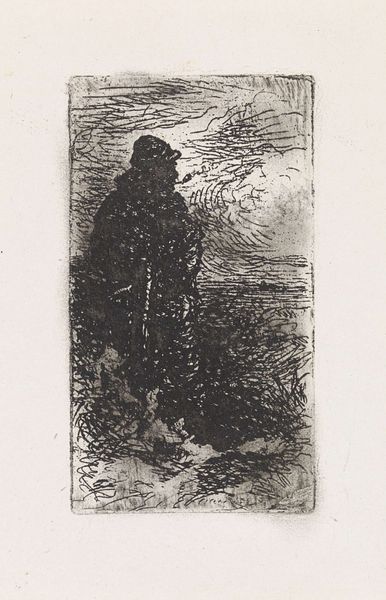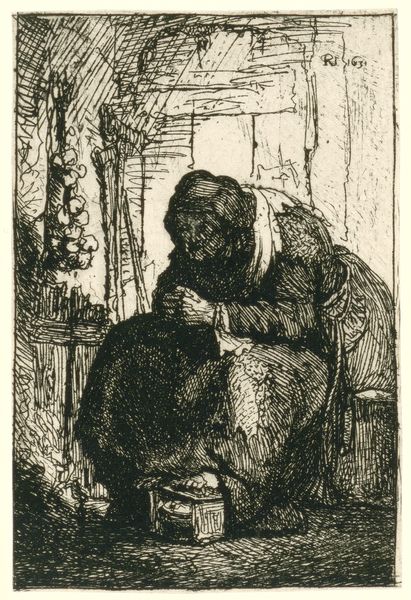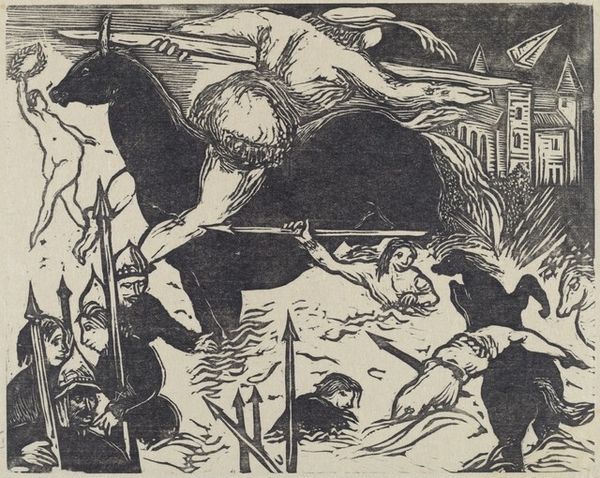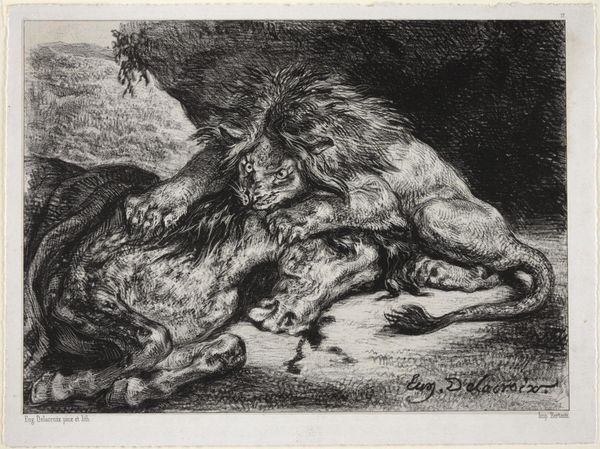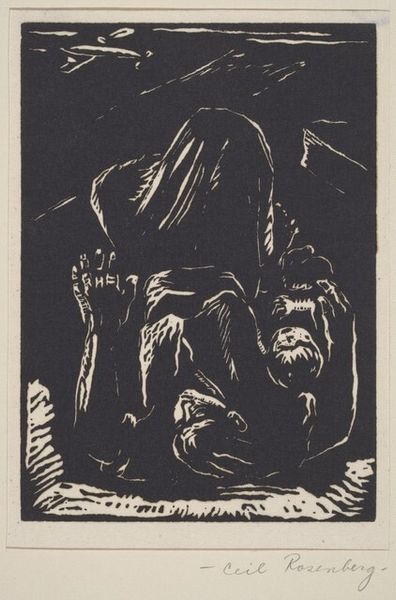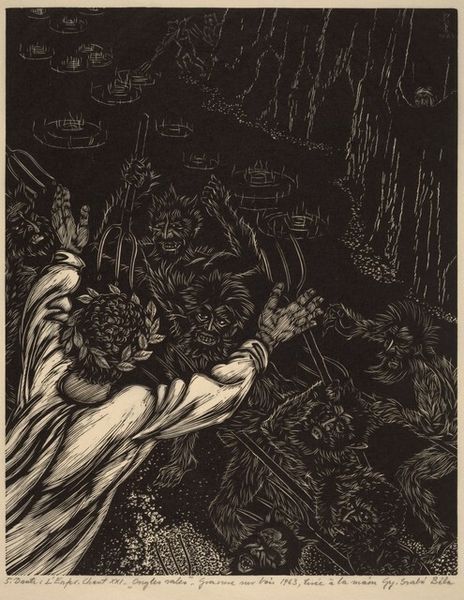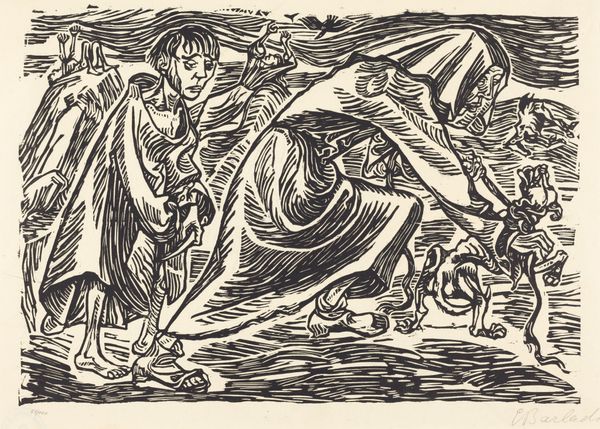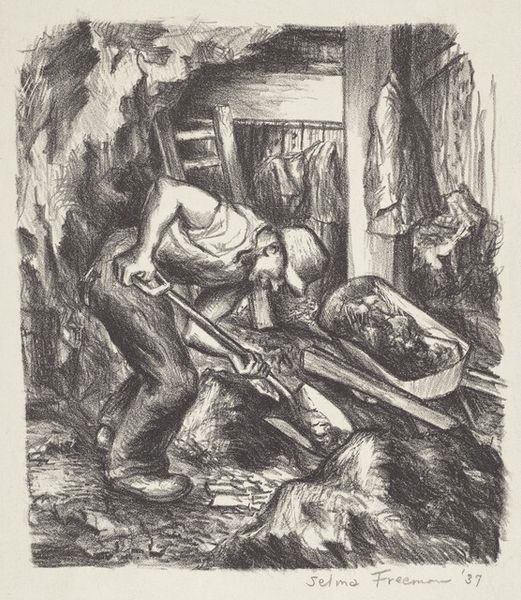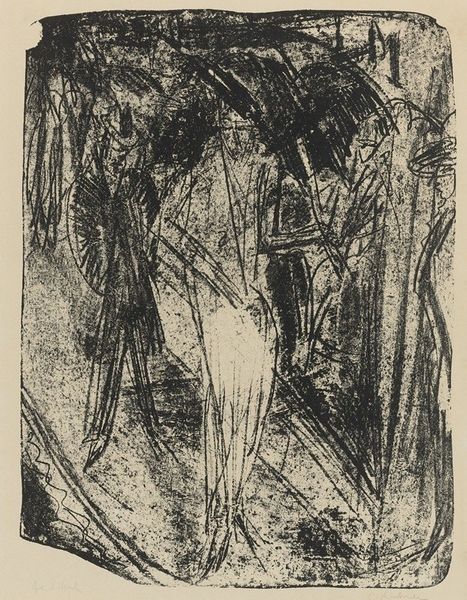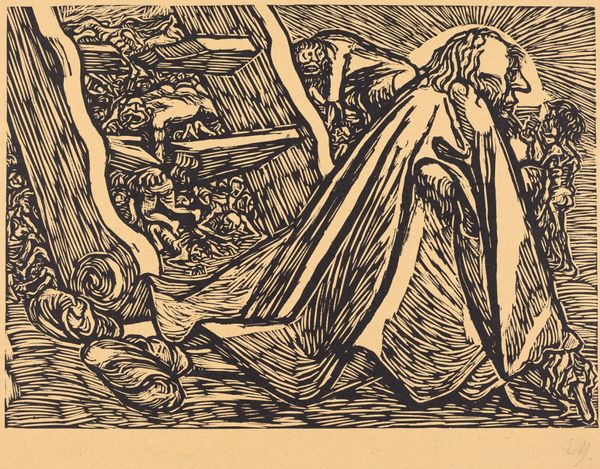
drawing, ink, pen
#
drawing
#
narrative-art
#
pen drawing
#
figuration
#
ink
#
pen
Copyright: Public Domain: Artvee
Curator: This evocative image, titled "The Miser," is a pen and ink drawing completed in 1912 by Arthur Rackham. Editor: It’s a chilling image, isn't it? The frantic, almost scribbled lines give the scene a feeling of anxiety, of being trapped, visually mirroring the miser's emotional state. Curator: Absolutely. Rackham was a master of visual metaphor. The claustrophobic composition—the figure almost barricaded by what appear to be stones and a brick wall—speak volumes about the isolating nature of greed. The brick wall reminds me of his illustrations for fairy tales, full of goblins and oppressive surroundings. Editor: Indeed, that brick wall is particularly potent. Is it keeping him in, or is it keeping the rest of the world out? The man’s obsession has constructed a very real barrier. Also the man has dirty feet and it almost appears he has only a simple rag of clothing wrapped around him, indicating neglect. This suggests an unwillingness to meet even his own basic needs! Curator: Precisely. He's literally surrounded by the objects of his desire, and yet there’s no sense of comfort or abundance. His own twisted posture seems to echo the gnarled shapes that enclose him; he has taken on the symbolism of his own environment. Note the frantic scratching strokes the artist employs and their impact on the image. Editor: Which brings us to a crucial question: is Rackham condemning or commenting? Is he offering a cautionary tale about capitalism and excess? Are we, the viewers, being challenged to recognize the societal roots of such self-destructive behavior? What message is it carrying and what impact will that message have? Curator: I think Rackham is doing both, offering both social critique and personal analysis, inviting us to reflect on the deeper roots and cultural representations of such avarice that is present in social structures. The imagery serves to trigger a memory, both of fairytales but also broader concepts. Editor: It's a work that compels us to ask uncomfortable questions, revealing not just an individual pathology, but the socio-economic structures that nurture it. And it is also up to us to discuss. Curator: Agreed. A stark and enduring visual reminder of the psychological traps we can create for ourselves and the cultural echoes behind them.
Comments
No comments
Be the first to comment and join the conversation on the ultimate creative platform.
